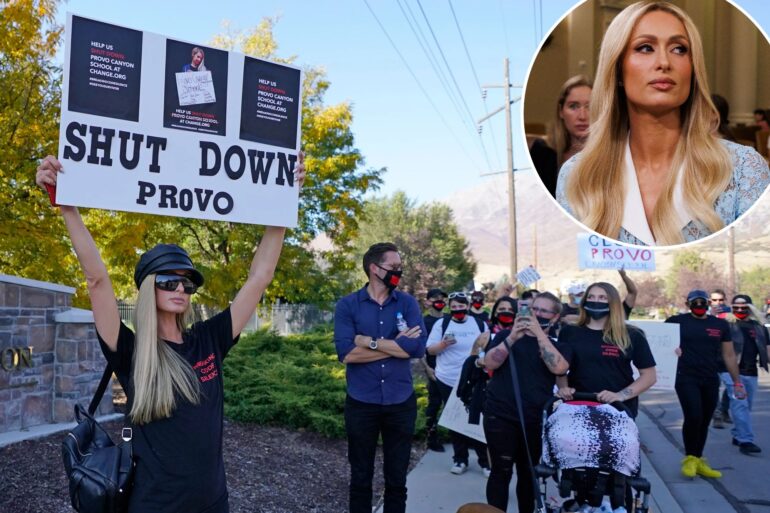🔴 Website 👉 https://u-s-news.com/
Telegram 👉 https://t.me/usnewscom_channel
Paris Hilton was back in the spotlight — not for a new reality show, but as the face of a movement to abolish youth residential treatment. Her claims of abuse at a Utah facility in the 1990s helped launch the viral #BreakingCodeSilence campaign, which has since inspired a dozen state laws, a federal law, and an upcoming Netflix dramatization of the “troubled teen industry.”
The message pushed by Hilton and other self-identified “survivors” is clear: All residential programs are abusive by design. But behind the documentaries, exposés, and TikTok testimonials lies a far more complex truth.
Residential treatment isn’t where parents send kids for typical teenage rebellion — it’s often a last resort for kids in crisis. These programs vary widely — from locked psychiatric facilities to wilderness therapy — in structure, clinical intensity, and quality.
Some serve suicidal, psychotic, or violent youth under 24/7 supervision. Others help emotionally dysregulated or developmentally delayed teens stabilize and learn life skills.
Hilton isn’t calling for oversight or reform. She’s repeatedly declared that it’s her personal mission to shut down the “troubled teen industry.” When asked what parents should do instead, she’s suggested grounding their kids or taking away their phones.
That’s not a serious solution for families in psychiatric crisis. It’s the mental-health equivalent of “defund the police” — a call to dismantle a vital system with no viable alternative.
The consequences are already visible. Since 2021, Oregon, Michigan, and Utah have passed laws restricting physical restraint in treatment settings. Hilton testified for the Oregon and Utah bills, helping to push them over the finish line.
The result? Programs have turned away hundreds of high-acuity youth they can no longer serve. Emergency rooms, juvenile detention, and homeless shelters are left to absorb the fallout, straining resources for others in need.
Facilities report a significant increase in staff assaults, riots, and calls to police. Activist rhetoric has discouraged parents from seeking residential care, and youth in treatment are increasingly resistant to engaging with the therapeutic process. Oregon and Michigan are now considering reversing some of the reforms.
Child abuse allegations against staff have soared — the vast majority unsubstantiated — leaving workers afraid to intervene for fear of triggering an investigation.
Staff turnover is rising not only due to escalating violence but also because many have been doxxed, threatened, or seen their facilities targeted by bomb threats.
Hilton’s followers flood review sites with horror stories, often from people who never attended the programs. Some facilities have shut down due to the reputational damage.
What’s happening now reflects broader national trends — and echoes the long arc of deinstitutionalization.
Under former Gov. Andrew Cuomo’s “transformation plan,” New York eliminated one-third of youth beds in state psychiatric hospitals and more than half of residential mental health beds. Promised community-based care never fully materialized.
Since 2010, the US has lost 61% of youth residential programs. Now, suicidal and complex children wait days, weeks, or months in ERs for treatment beds that no longer exist.
These ERs were never meant to manage psychiatric crises, but are now the fallback as residential capacity collapses.
Research shows that 26-33% of youth mental health ER visits and mobile crisis calls involve repeat users — the very individuals who would benefit most from long-term care to break the cycle.
Hilton’s campaign hasn’t addressed the crisis—it’s only deepened it. She’s urged lawmakers to act on a decades-old story that doesn’t reflect current realities.
The movement she leads is dominated by wealthy white women with little awareness of the kids actually served, most from foster care and juvenile justice.
Media outlets have played a role, rejecting hundreds of op-eds in favor of sensational abuse stories, while ignoring those offering a different view. At 15, after a sexual assault and suicide attempt, I was sent to Provo Canyon School — the same facility Hilton attended and now campaigns to shut down. It was tough and structured, but not abusive.
It gave me time to stabilize and learn coping skills so that I could return home safely. Stories like mine — of kids who benefited — rarely make headlines, even though they represent a silent majority.
I recently authored a report for the Manhattan Institute examining anti-treatment claims, including that abuse is “systemic.” The evidence doesn’t support it. Most programs are licensed, regulated, and often outperform short-term crisis care. Federal data show they are no more dangerous than general hospitals.
The answer to imperfect care can’t be no care at all. Which is why policymakers must stop fawning over celebrities — and start listening to data.
Christina Buttons is an investigative reporter at the Manhattan Institute.

